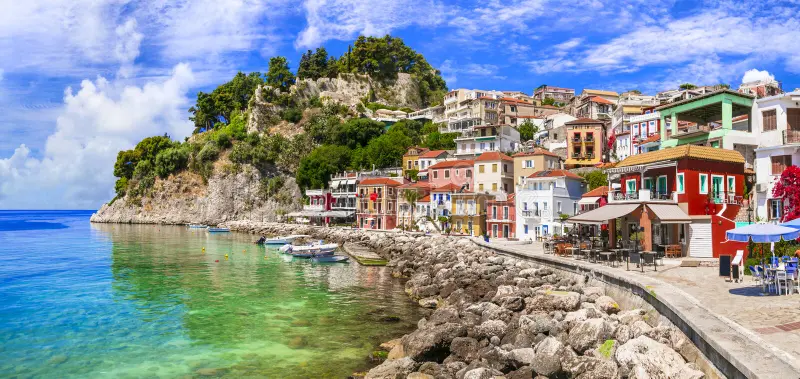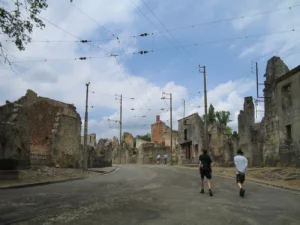- Home
- TRAVEL TIPS
- How Much Does A World Trip Cost
How Much Does A World Trip Cost
DigitalrezaidTRAVEL TIPS, COUNTRY GUIDES, Activities, DESTINATIONS, Planning3 months ago4.8K Views

A round-the-world trip is a fantasy many share — quit the 9-to-5 job, pack a bag, and see the world at your own pace. But once the wanderlust sets in, the very next question is often, “What will this all cost me?”
The fact is, there’s no correct answer. The price of a world tour will vary depending on where you travel, how you travel, how long you stay, and what level of comfort you expect.
Here, we’ll break down everything you have to think about — packing, fares, food, gear, and a range of other potential hidden expenses — so you can plan for the long haul and travel with confidence.
What is a World Trip?
Now, before we discuss costs, let’s get straight to what a world trip actually is. For most of us, it means hopping several continents over a few months, incorporating countries in Europe, Asia, Oceania, Africa, and the America. These trips can last anywhere from 6 to 12 months and include long-haul flights, overland travel, and plenty of flexibility. You don’t need to visit every country, but for the hottest around-the-world travelers, you can go anywhere from 10 to 20+ destinations.
Average Cost of a Round-the-World Trip in 2025
A budget traveler could live for around £30 to £50 a day, or about £11,000 to £18,000 per year. A mid-range traveler who enjoys added comforts might spend between £22,000 and £35,000. Those seeking luxury—staying in four-star hotels and dining out often—could easily spend over £50,000 annually. These estimates cover your full trip: flights, lodging, food, transport, insurance, activities, and admin costs like visas. For more travel tips and hidden gems, check out Positano beyond tourist spots.
Flights–The First Big Expense
The flights are usually the most significant initial expense. You can either book an RTW (round-the-world) ticket through airline alliances like OneWorld or Star Alliance or book your flights individually as you go. Most RTW tickets come with a price tag of £1,500 to £3,500 and span multiple continents (but often with routing restrictions). On the other end of the scale, the price of booking yourself ranges from £2,000 to £5,000 also, depending on your route, your time of travel, and your flexibility around your dates. Flying with budget airlines in Asia and Europe will reduce your costs quite a bit too — especially if you use flight search engines like Skyscanner or Google Flights to find them.
Accommodation – From Backpackers to Chipboard
Accommodation expenses can differ dramatically based on location. If you’re necking in Southeast Asia, Eastern Europe, or specific locations in South America, then you can quite easily find hostels or guesthouses for less than £15 a night. Prices are higher in parts of Western Europe, North America and Oceania. A budget traveler could spend on average £300–£600 a month, and someone preferring mid-range hotels or private Airbnbs would be willing to pay between £700 to £1,200 a month. You can spice things up now and then with a splurge or savings — Couchsurfing, for instance, or staying with friends.
Food–Street Eats to Fancy Feasts
Dining on the road need not bar your coffers, and plenty of trekkers take delight in local zest. In vast parts of Asia or Latin America, you can eat well for less than £10 a day. Preparing your meals, shopping at local markets, or eating street food will help keep costs down. If you’re eating out most days, then £15 to £25 at cafes and mid-range restaurants. Sometimes, you want to splurge on a nice dinner, especially in food-centric destinations like Italy, Japan, or Thailand.

Getting Around Locally
In addition to long-haul flights, you’ll need to factor in local transportation: buses, trains, ferries, metros, tuk-tuks, taxis, or even scooter rentals. In countries with strong transport networks, such as Vietnam, Peru, or India, travel can be very cheap. Long-distance travel and car hire are expensive in places like Australia or the U.S. Budget travelers might spend anywhere between £1,000 to £2,000 on local transport over 12 months, while for active or more fast-paced travelers, the figure would be closer to £3,000 or beyond.
Visas and Entry Fees
While some countries allow UK citizens to enter without a visa, others let you in as long as you apply ahead of time and pay a fee. For instance, India’s e-visa could be approximately £25, Vietnam’s circa £20, whilst nations like China or Russia can charge £100+. Throughout a year-long trip, visa and entry fees can range from £200 to £1,000, depending on your itinerary. Be sure to check each country’s visa rules well in advance so that you don’t wind up with any last-minute surprises. Additionally, if you’re planning to travel in the UK, explore the best places to visit during the spring season in this guide to UK spring destinations, which offers great insights for travelers.
Travel Insurance – A Requirement, Not an Option
One of the biggest mistakes you can make is not to buy travel insurance. You want a robust plan that covers medical emergencies, cancellations, theft , and lost luggage. For long-term travel, good insurance options are offered by providers such as SafetyWing, World Nomads, or True Traveller. Prices for cover range from £300 to £1,000, depending on your age, country of choice, and type of policy. Some policies also offer coverage for COVID or adventure sports add-ons.
Costs You Might Not Consider Before You Travel
Before your quest begins, you must prepare for costs. You’ll probably want to spend money on a good backpack or luggage, lightweight clothes, travel shoes, a universal adapter, electronics, toiletries, and travel documents. Depending on where you’re going, you may need vaccinations, too, at a cost of several hundred pounds. In all, allow £500 – £2,000 for pre-departure expenses.
What You Spend Differs by Region
Travel prices are immensely different depending on the region. Southeast Asia, for example, is one of the cheapest regions for long-term travel, where you can spend as little as £25 a day. Meanwhile, in Europe, Australia, or Japan, you’re probably looking at spending £60 to £100 a day. South America and some of Africa fall in the middle. So, the destinations you select — and how long you spend in each — will dramatically affect your overall budget.
World Trip Cost + Travel Saving Tips
If you’re determined to stretch your budget further, try traveling slowly to save on transportation, avoid peak tourist seasons, cook your meals, and use travel rewards points to pay for flights or hotels. (And many of you volunteer, work remotely, or teach English to get by while you are overseas. It also helps you save money: Having flexibility, taking local transport, and spending more time in fewer places.

Final Thoughts
A trip around the world doesn’t need to cost the earth, although it does involve some planning and a dose of awareness. A yearlong world trip, done reasonably easily on a budget for most people, can run between £15,000 and £20,000. For travelers flying first-class or venturing to pricier regions, that figure can easily double. They said the great thing about a world trip is that it’s super customizable. Travel on your terms, avoid tourist traps, be spontaneous, and make a trip that works with your budget and lifestyle. Ultimately, what you take away from all this will be much greater than the amount on the price tag.
FAQs
Is it possible to circumnavigate the globe for less than £10,000?
Yes! Many people have done what they want: travel for as long as possible on a budget, through inexpensive parts of the world like Southeast Asia, or by doing volunteer work and moving at a slower pace.
Do I have to make all of my reservations before I leave?
Not at all. Researching potential destinations and planning your first few flights and first few nights of accommodation is a good idea, but whether you decide to stick with that plan depends on the destination. Flexibility could lead to the most memorable experiences and best deals.
Where is the most affordable region to travel to in the long term?
Southeast Asia is the runaway winner. Nations like Thailand, Vietnam, and Cambodia have excellent food, affordable transport, and inexpensive places to stay, all at prices many times lower than in the West.
Is it time to give up my job and travel the world?
That’s a personal decision. Some go on a career break or sabbatical, while others are freelancers or work remotely. If you want to see what it’s like, you might want to take a shorter trip first and test the waters before jumping in.



















